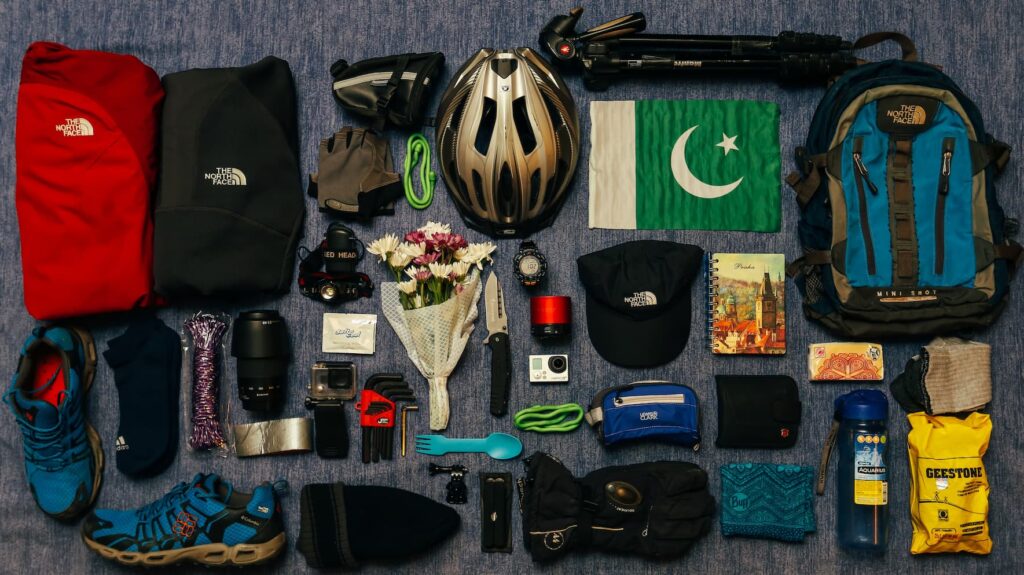A bicycle is not only a means of transportation, but also a sports equipment, which allows you to keep yourself in shape. But despite all the benefits of cycling, it is quite dangerous, especially on roads with heavy traffic. It is therefore necessary to use cycling equipment that will give you the necessary protection.

How do I choose the right cycling outfit?
Choosing the right outfit is an important aspect of safe and comfortable cycling, it should protect you from injury and discomfort. The use of equipment increases your safety on the road, reduces the risk of injury from falls or collisions with other objects, and increases riding comfort by protecting you from the sun, wind, and rain.
There are many factors to consider when choosing bike gear, such as weather conditions, riding style, and the objectives you set for yourself. In this article, we will look at all the nuances and explain in detail how to choose the right outfit.

What types of cycling equipment are there?
There is a wide range of cycling equipment in the world of cycling, each of which has its own characteristics and is designed for specific tasks. Some of them are:
- Helmets
Helmets are probably one of the most critical pieces of cycling equipment you should look out for. This is due to the fact that they provide reliable protection for the head in the event of a fall. The right bicycle helmet should provide good ventilation, a secure fit and fit your size.
- Goggles
Goggles protect your eyes from wind, sunlight, dust, insects and other small particles. They also prevent photokeratitis, an eye disease caused by ultraviolet radiation.
- Gloves
Gloves are designed to protect your hands and prevent blisters. They also help you better grip your bike handlebars, especially important on long rides.
- Elbow and Knee Pads
Elbow pads are made of tough, durable materials that can significantly reduce impact and prevent injury. They allow you to protect your skin from scratches, wounds and bruises and increase your level of cycling safety.
- Cycling Shorts
Cycling shorts provide comfort while cycling. They have reinforced cushions in the sciatic area that help reduce pressure on the bone and prevent the formation of diaper rash.
- Jackets and Vests
Jackets and vests may be necessary to protect against wind, rain, and cold. Models equipped with reflective elements increase your visibility on the road in the dark.
- Shoes
Cycling shoes should provide secure foot support and protection against shock. They may also be equipped with pedal clips that help improve pedaling efficiency.
How to choose the right size of equipment?
Incorrectly sized equipment negatively affects its protective properties and increases the risk of injury. To determine your size, you should measure your body parts.
- To determine helmet size, measure the circumference of the head above the eyebrows and ears. The helmet size should be comfortable and tight without excessive pressure on the head.
- To select gloves, measure the length of the palm from the wrist to the fingertips. They should be neither too tight nor too loose.
- Elbow and knee pads must be the same size as your thighs and forearms. Before you buy, make sure they fit comfortably on the body and do not slip.
It is important to remember that sizes may vary slightly depending on the manufacturer. Therefore, it is best to try on cycling equipment before buying to make sure it fits you.
How to choose the material?
For maximum protection it is necessary to choose equipment from reliable and tested materials, let’s consider the most popular of them, their advantages and disadvantages:
- Polypropylene is a lightweight, flexible and durable material that is used to protect elbows, knees and shoulders. It absorbs shock well, but can be uncomfortable to wear in hot weather.
- Plastic is a lightweight and durable material that is commonly used to make helmets and protective pads. It can protect you well from impacts, but can break down if you fall hard.
- Nylon is a breathable and durable material that provides good protection against scratches and abrasion. It is lightweight and comfortable to wear.
- Kevlar is a strong and flexible material that is widely used to make protective elbow and knee pads. It adapts easily to the shape of your body and provides a high degree of protection against impact and scratches.
- Leather – used to make gloves and other equipment. It provides excellent protection, but can be uncomfortable to use in hot weather.
- Carbon Fiber – A lightweight and durable material that is used to protect the head in helmets. It provides excellent impact protection, but can be expensive.
When choosing a material for your cycling gear, you need to consider your riding type, personal preference, and budget. However, the main selection criterion should be maximum protection in case of a fall or accident.
Cycling equipment depending on the type of riding
The style of riding directly affects the choice of equipment, as each style requires its own special requirements and functions.
For road riding, cycling equipment should be lightweight and well ventilated so that the body does not overheat during long rides at high speeds. For mountain riding, it is important to provide extra protection for the head, arms, legs and body, since mountain biking trails are usually more difficult and dangerous. You should wear knee, elbow and wrist protectors when riding BMX, because this style of riding is connected with performing tricks and jumps.
In conclusion, we would like to remind you that biking is not only a fun sport and a great way to spend time in nature, but also a serious activity that requires a reliable protection. So do not skimp on your safety and choose only high quality cycling equipment that suits your individual needs and riding style. Have a pleasant and safe ride on your bike!